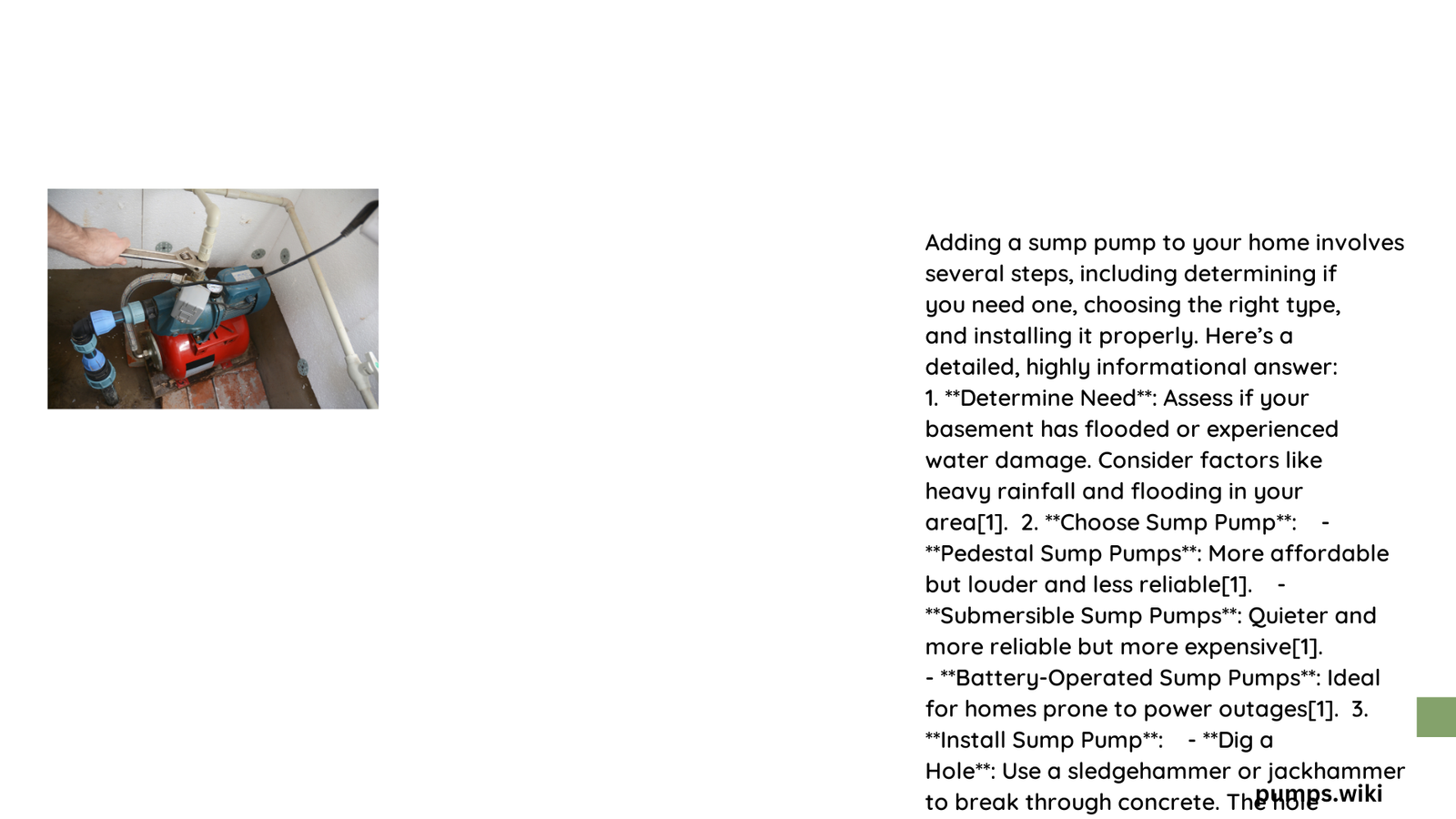Protecting your home from water damage requires strategic planning and proactive measures. Adding a sump pump to your home is a critical solution for preventing basement flooding, managing groundwater, and safeguarding your property’s structural integrity. This comprehensive guide will walk you through every aspect of sump pump installation, from understanding its importance to executing a successful implementation.
Why Add a Sump Pump to Your Home?
Water damage can be devastating, causing thousands of dollars in repairs and potential health risks from mold and mildew. A sump pump serves as your first line of defense against basement flooding, redirecting water away from your home’s foundation and preventing moisture-related complications.
What Are the Essential Steps for Sump Pump Installation?

Selecting the Perfect Location
When adding a sump pump to home, location is paramount. Consider these critical factors:
- Lowest Floor Point: Identify the basement’s lowest elevation
- Proximity to Power Source: Ensure a nearby GFCI outlet
- Drainage Patterns: Understand natural water flow
- Accessibility: Choose a spot for easy maintenance
Preparation and Tools Required
| Tool Category | Specific Items |
|---|---|
| Digging Tools | Sledgehammer, Jackhammer |
| Measuring Tools | Tape Measure, Level |
| Cutting Tools | Hacksaw, Drill |
| Safety Equipment | Safety Glasses, Gloves |
| Plumbing Supplies | PVC Pipes, Check Valve |
Installation Process Breakdown
- Excavate Sump Pit
- Dig a hole matching basin dimensions
- Add 2-3 inches of gravel for drainage
-
Place stable foundation stone
-
Basin and Pump Placement
- Install basin with filter fabric
- Position sump pump carefully
-
Connect to dedicated electrical circuit
-
Discharge Pipe Configuration
- Drill exterior wall opening
- Install PVC discharge pipe
- Seal with waterproof caulk
- Attach check valve to prevent backflow
How Much Does Sump Pump Installation Cost?
Budget considerations vary based on multiple factors:
- DIY Installation: $300 – $800
- Professional Installation: $500 – $1,500
- Pump Unit Cost: $100 – $500
- Additional Materials: $100 – $300
What Safety Precautions Should You Follow?
- Disconnect electrical power before starting
- Wear appropriate safety gear
- Avoid using extension cords
- Ensure proper ventilation
- Follow manufacturer’s guidelines
Maintenance Tips for Long-Term Performance
- Test pump functionality quarterly
- Clean pit and basin annually
- Check electrical connections
- Inspect discharge pipe for blockages
- Replace backup battery every 2-3 years
Potential Challenges and Solutions
Common Installation Issues
- Water Seepage: Use waterproof sealants
- Electrical Complications: Consult licensed electrician
- Improper Drainage: Adjust discharge pipe angle
- Pump Failure: Install battery backup system
Conclusion
Adding a sump pump to home is an investment in property protection. By understanding the process, preparing adequately, and following professional guidelines, homeowners can effectively manage water risks and preserve their basement’s integrity.
